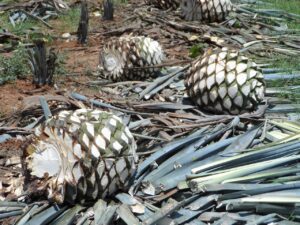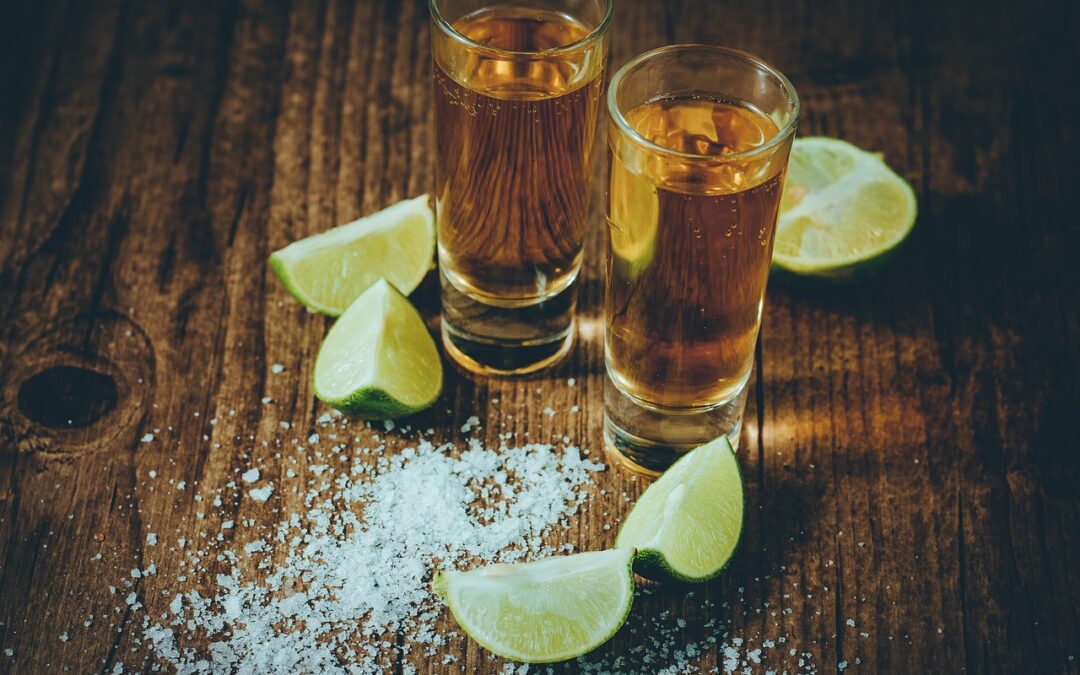By Bob Lipinski
“One tequila, two tequila, three tequila, floor.” — Comedian George Carlin, 1937-2008
Tequila is a distilled spirit produced from the juice of the blue agave, a plant native to Mexico. The agave has stiff, blue-tinted leaves and needle-like thorns, resembling cactus. Tequila is produced within the state of Jalisco, where the town of Tequila is located, as well as in the states of Guanajuato, Michoacán, Nayarit, and Tamaulipas.

Blue Agave
In 1795, King Carlos IV of Spain granted Jose Maria Guadalupe Cuervo y Montana the first license to produce and distribute tequila in Mexico, then under Spanish rule. In 1873, Don Cenobio Sauza became the first to export tequila to the United States, crossing the border at El Paso del Norte (now Juárez) with three casks and six jugs of mezcal-tequila.
Tequila comes in two main types, based on the agave content used during fermentation: “100% Agave Tequila” and “Mixto Tequila.” Tequila labeled “100 percent Agave” or “100 percent Blue Agave” is made entirely from agave. If the label doesn’t say 100 percent agave, it isn’t. Mixto Tequila consists of at least 51 percent blue agave and other sugars. It is simply labeled “tequila” without indicating it as mixto.
Tequila must be distilled at least twice by law, though some producers opt for a third distillation. It is bottled at a minimum of 80-proof unless flavored.
Tequila can be grouped into four distinctive categories — Blanco (gold or oro, a subgroup, often referred to as mixto), Reposado, Añejo, and Extra Añejo. Cristalino Tequila (crystalline) is an unofficial category (introduced in 2008) of aged tequilas (reposado, añejo, extra-añejo) that are filtered to remove the color (from barrel aging) while retaining the taste and aroma from the barrel.
Blanco (also known as silver tequila), is unaged. It has characteristics such as black pepper, citrus, dill, earthy, green olive, lemongrass, pine, tobacco, and vegetal notes.
Gold (oro) mixto is typically unaged but often treated with caramel coloring or oak extracts to simulate wood aging.
Reposado is aged 2 months to 1 year in wood. It has notes of black pepper, caramel, cinnamon, dried grass, figs, ginger, mint, smoke, tobacco, and vegetal.
Añejo is aged 1 to 3 years in wood. It has characteristics such as baked apple, butterscotch, dark chocolate, clove, ginger, honey, oak, orange, and smoke.
Extra Añejo is aged at least 3 years in wood, comparable to brandy in quality and drinkability.
Blanco and Gold tequilas are ideal for cocktails, while other types are good for sipping, like brandy.

“Tequila. Straight. There’s a real polite drink. You keep drinking until you finally take one more and it just won’t go down. Then you know you’ve reached your limit.” (Lee Marvin, 1924-1987, American actor)
Bob Lipinski is the author of 10 books, including “101: Everything You Need To Know About Whiskey” and “Italian Wine & Cheese Made Simple” (available on Amazon.com). He consults and conducts training seminars on Wine, Spirits, and Food and is available for speaking engagements. He can be reached at www.boblipinski.com OR bkjm@hotmail.com.


 Bob Lipinski, author of 10 books; writes, consults, and conducts training seminars on Wine, Spirits, and Food and is available for speaking engagements.
Bob Lipinski, author of 10 books; writes, consults, and conducts training seminars on Wine, Spirits, and Food and is available for speaking engagements.
Recent Comments